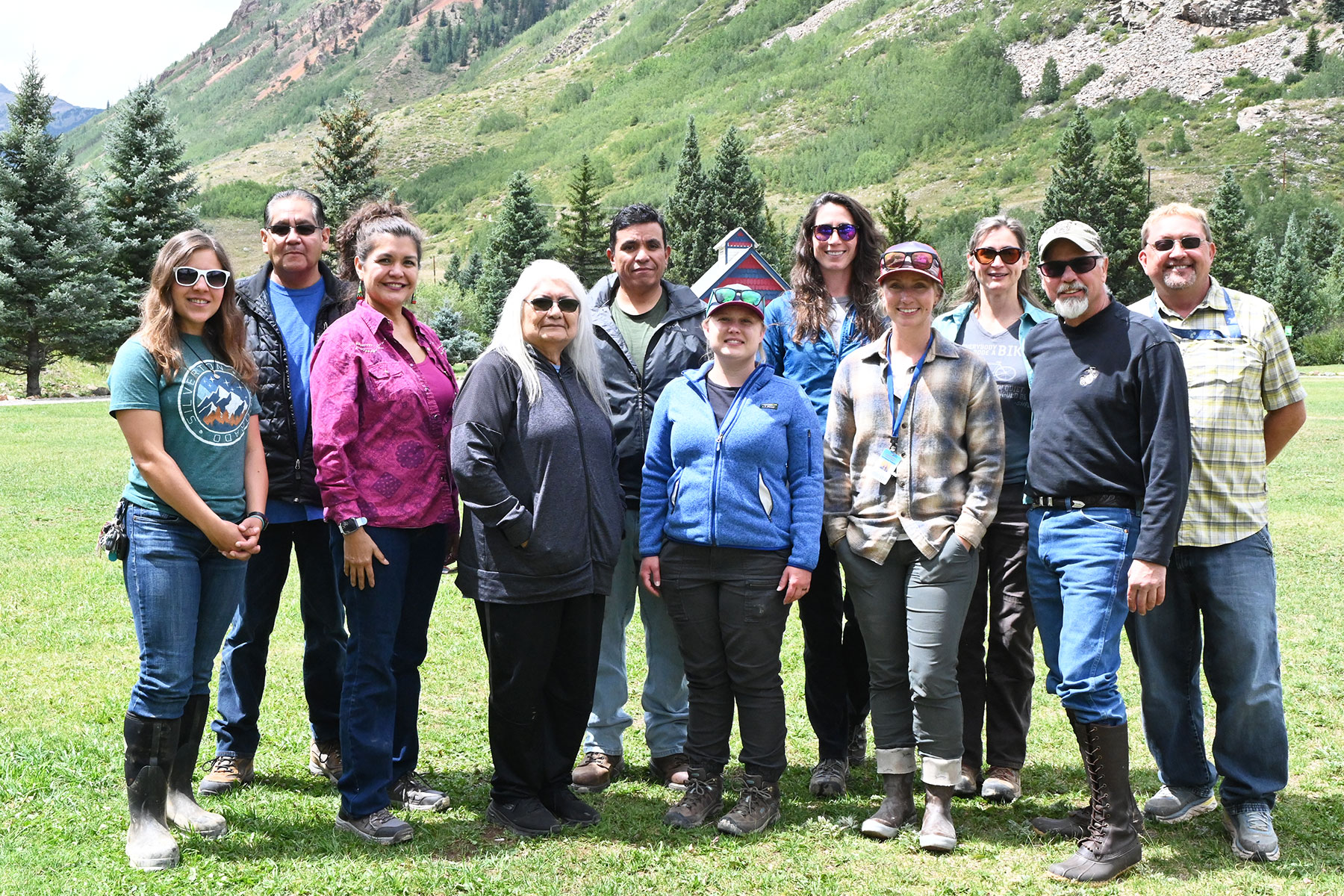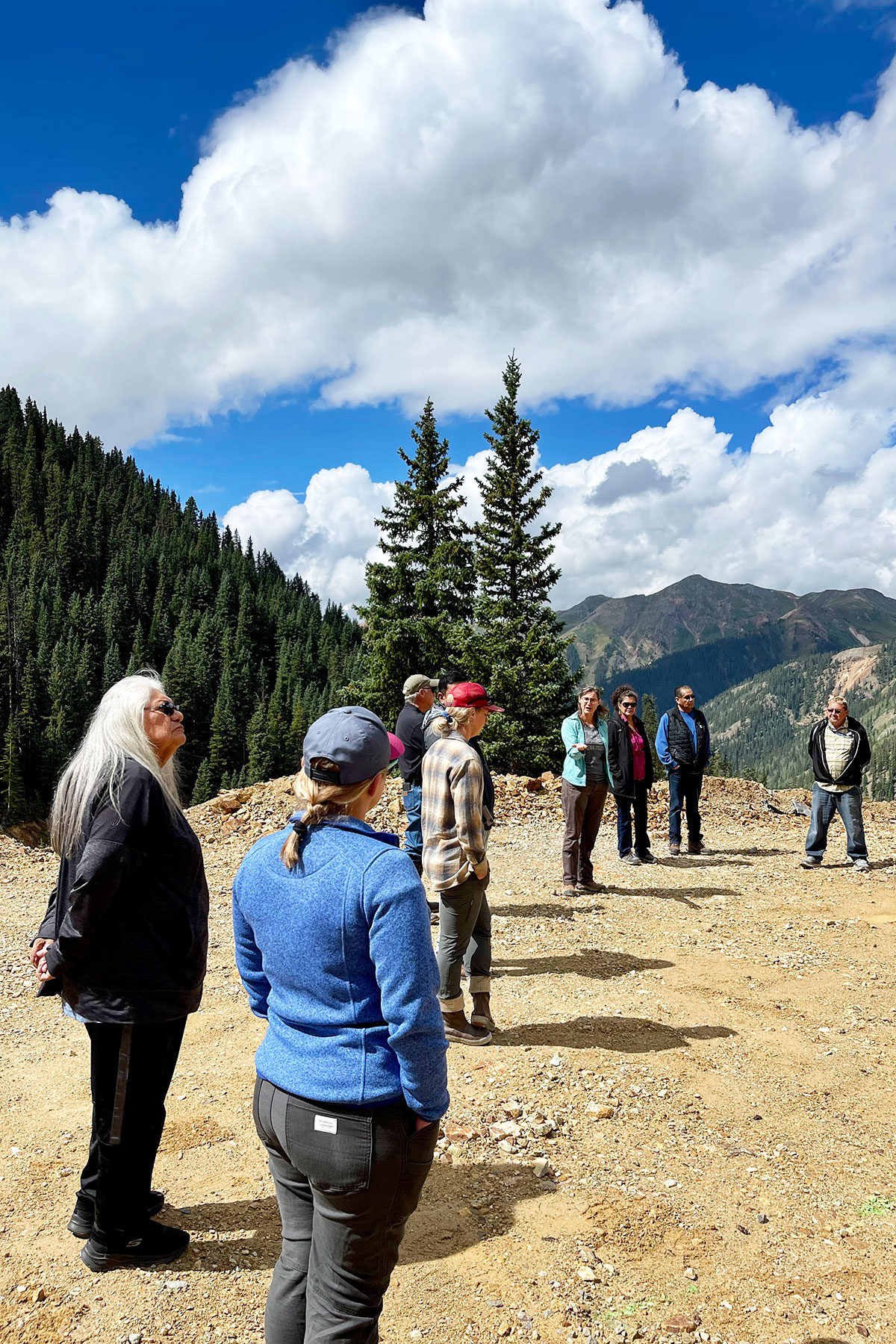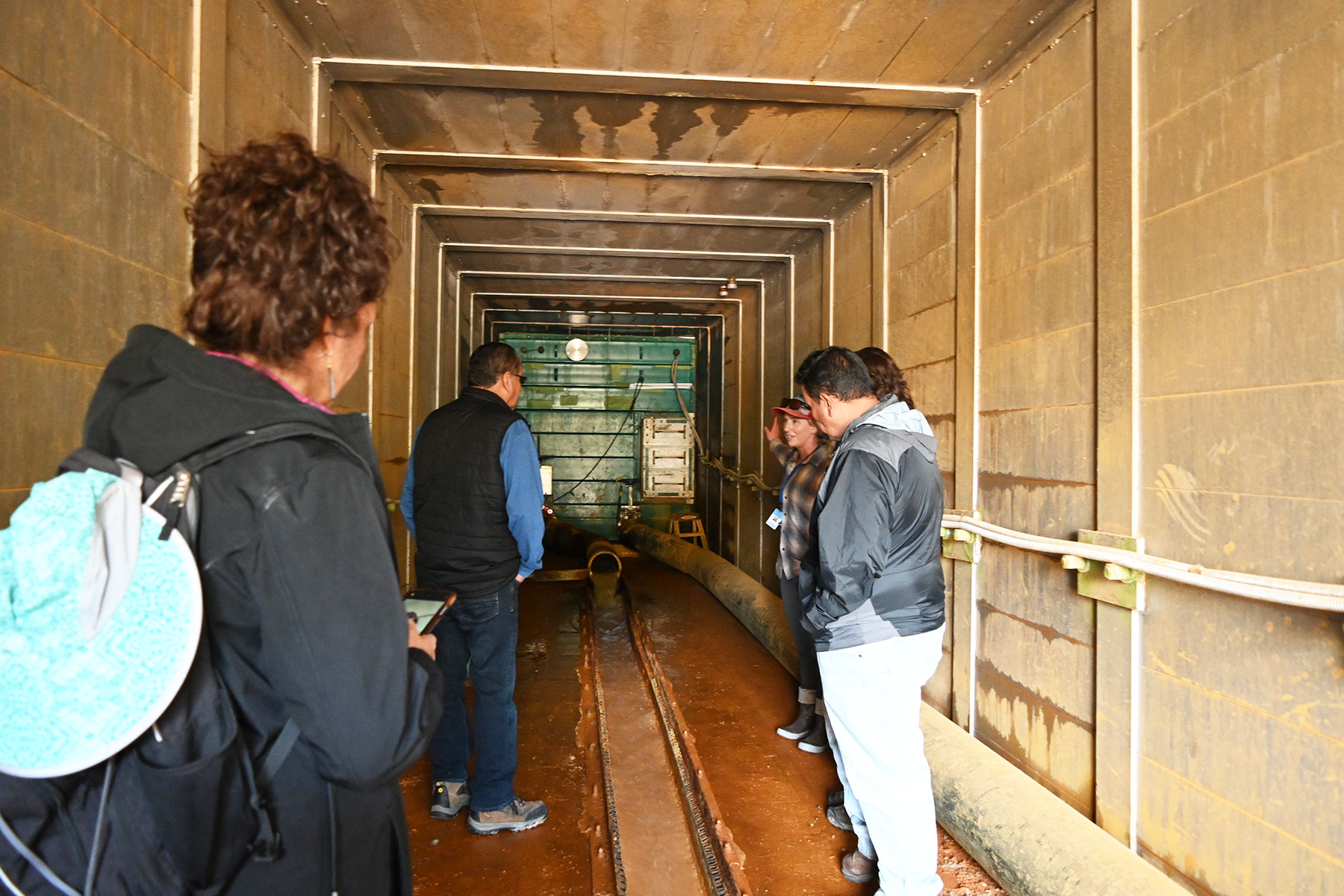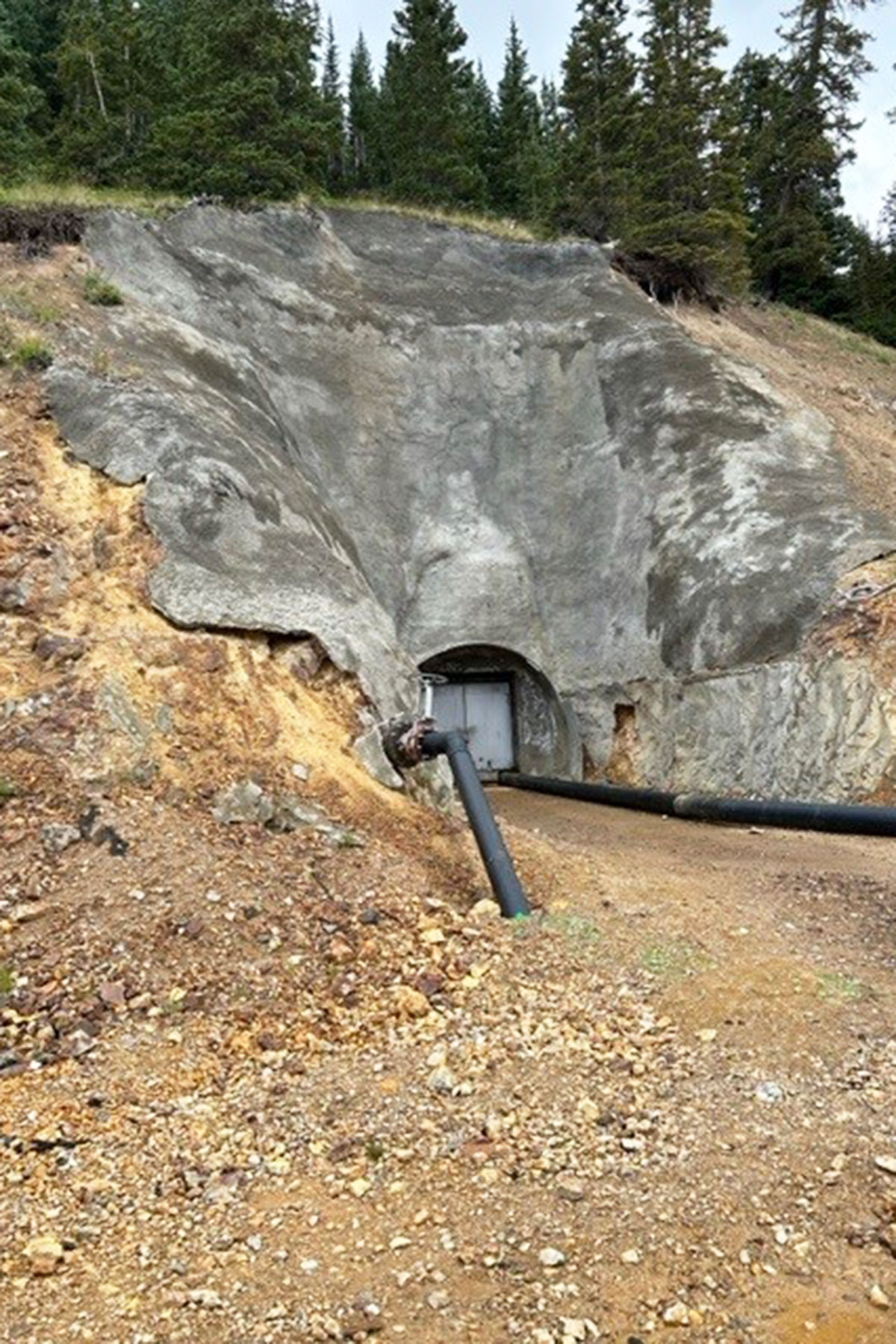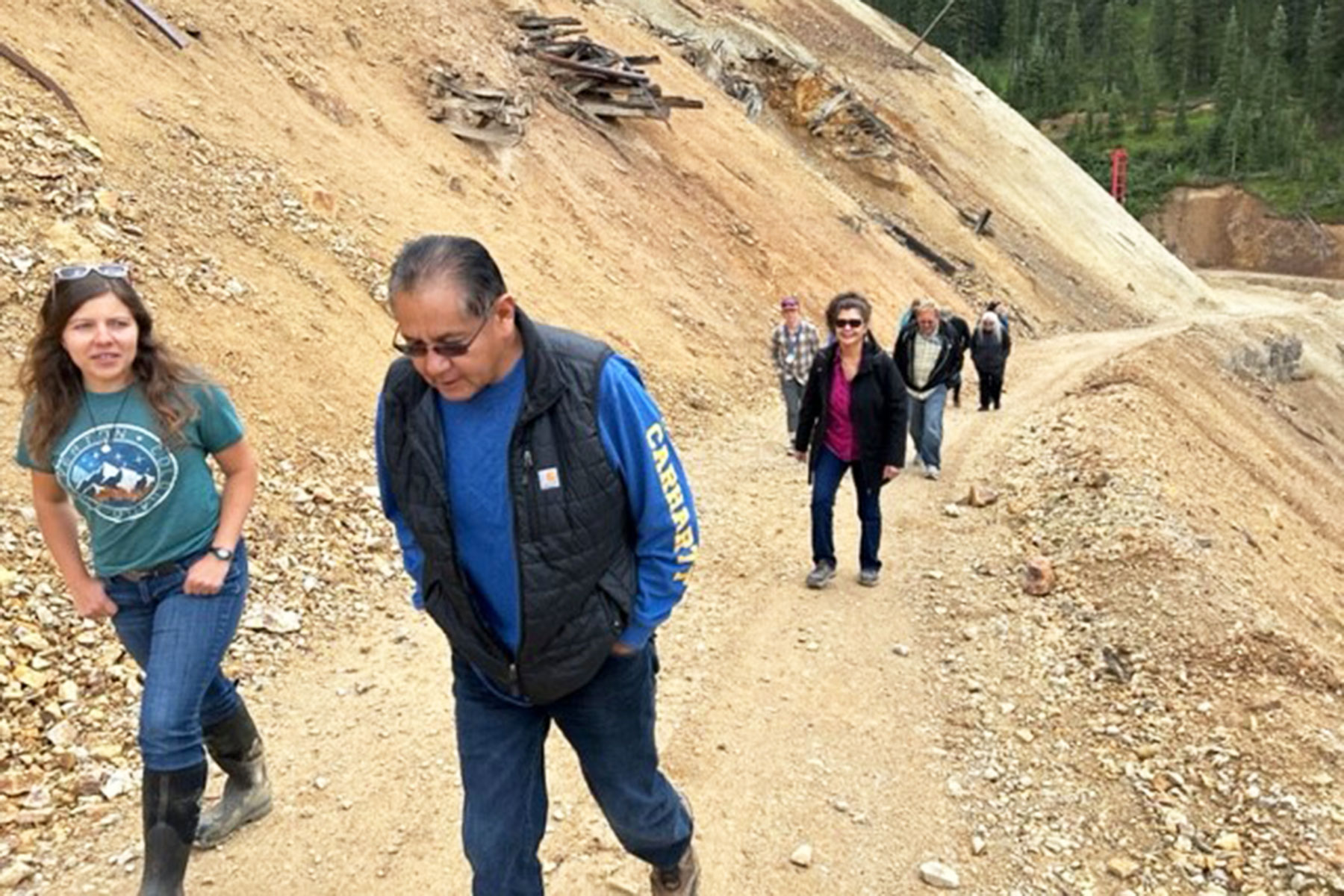On Thursday, August 24, Southern Ute Tribal Council Members, Marge Barry, Stacey Oberly, Marvin Pinnecoose, and Chairman Melvin Baker visited the Bonita Peak Mining District. This tour was a follow-up meeting from an Environmental Protection Agency (EPA) visit to the Southern Ute Reservation. The Bonita Peak Mining District is a collection of inactive and abandoned mines located near the town of Silverton in San Juan County, Colo. The EPA has been working on clean-up efforts and water monitoring in the mining district for years. In 2015, the Gold King Mine (located within the Bonita Peak Mining District) breached and spilled wastewater down the valley and into the Animas River. The public immediately noticed the discoloration of the water. Many people have said that the color looked gold or bronze. I refer to a more specific color from Crayola crayons listed as Banana Mania.
The Southern Ute Indian Tribe is highly active in monitoring and utilizing our water rights. One of our sources of water for the Reservation comes from the Animas River. Our concern was, and still is, the fallout from the wastewater spill. We needed to know when the water would be safe for people and wildlife. We also have concerns about whether this can happen again and what is being done now to make sure that this is being handled. When the EPA came to provide an update on the Bonita Peak Mining District, the Southern Ute Tribal Council had many questions. It was decided that a tour of the area would be beneficial in understanding the current situation.
Tribal representatives were shown the site of the Gold King Mine. We saw the processing plant where the water is treated through various procedures. A polymer is applied to the water which separates out the sludge and discoloration. The water is also treated to re-establish a favorable PH balance before being released down into Cement Creek and the Upper Animas River drainages. Cement Creek eventually meets up with the Animas River downstream, but the treated water is of favorable quality when released onsite; in fact, the quality is close to drinking water standards when released. Tailings from the mines are collected and a repository has been created on the mountain. The goal is to keep the sludge, wastewater, and tailings all in a centralized location, away from the public. The process of disposal and cleanup is an ongoing battle, but the efforts up to date have been very impressive. We appreciate the EPA keeping us in the loop and look forward to the continued progress of this complicated clean up.

